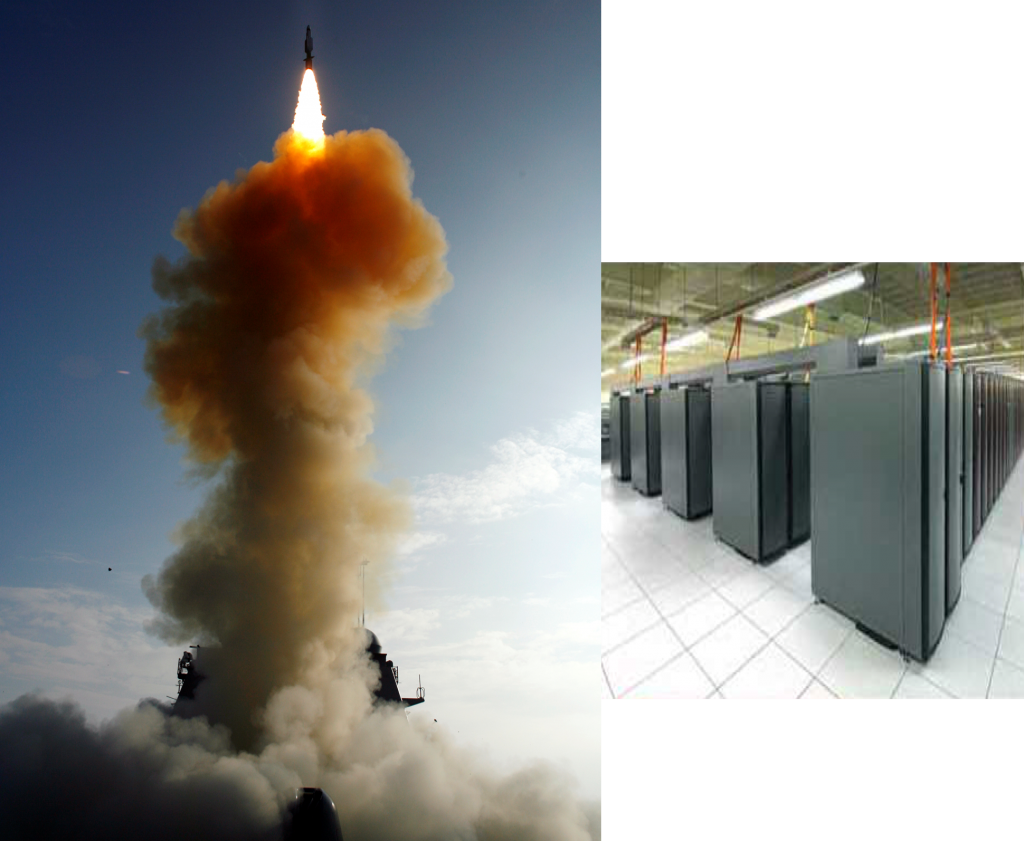
Defective satellite brought down
In February 2008, Sandia’s Red Storm high performance computer helped the U.S. military plan and carry out the successful interception of a defective reconnaissance satellite that threatened to fall to Earth. A Sandia team ran hundreds of impact calculations using advanced modeling and simulation tools to determine the best way to ensure the 5,000-pound, car-sized satellite — traveling 153 miles above the Earth at 17,000 miles an hour — was destroyed with a single SM-3 missile shot.
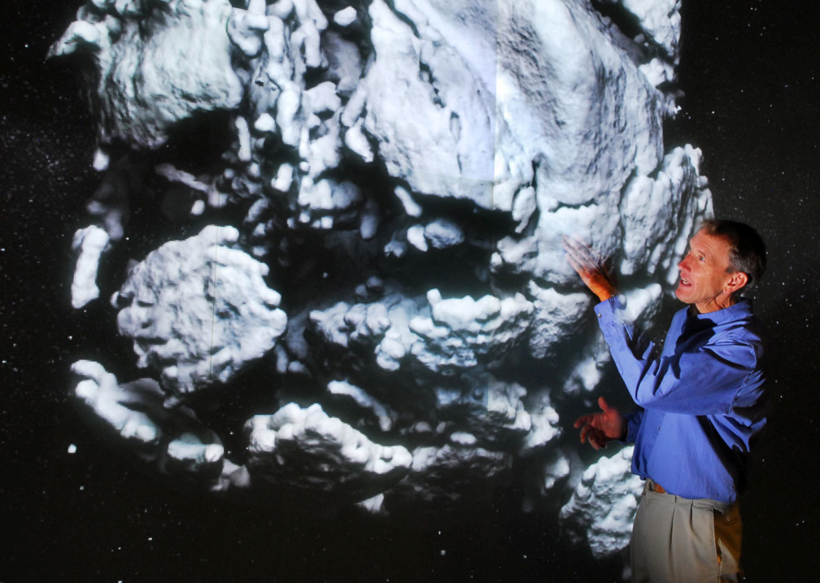
Tracking killer asteroids or space junk
In 2008, a global team that included two Sandians for the first time was able to detect and track an asteroid heading toward Earth and predict its time and place of impact. While the small asteroid posed no danger, the ability to provide early warning could be critical for larger asteroids, which strike the Earth fairly often, or the ubiquitous space debris now in orbit.
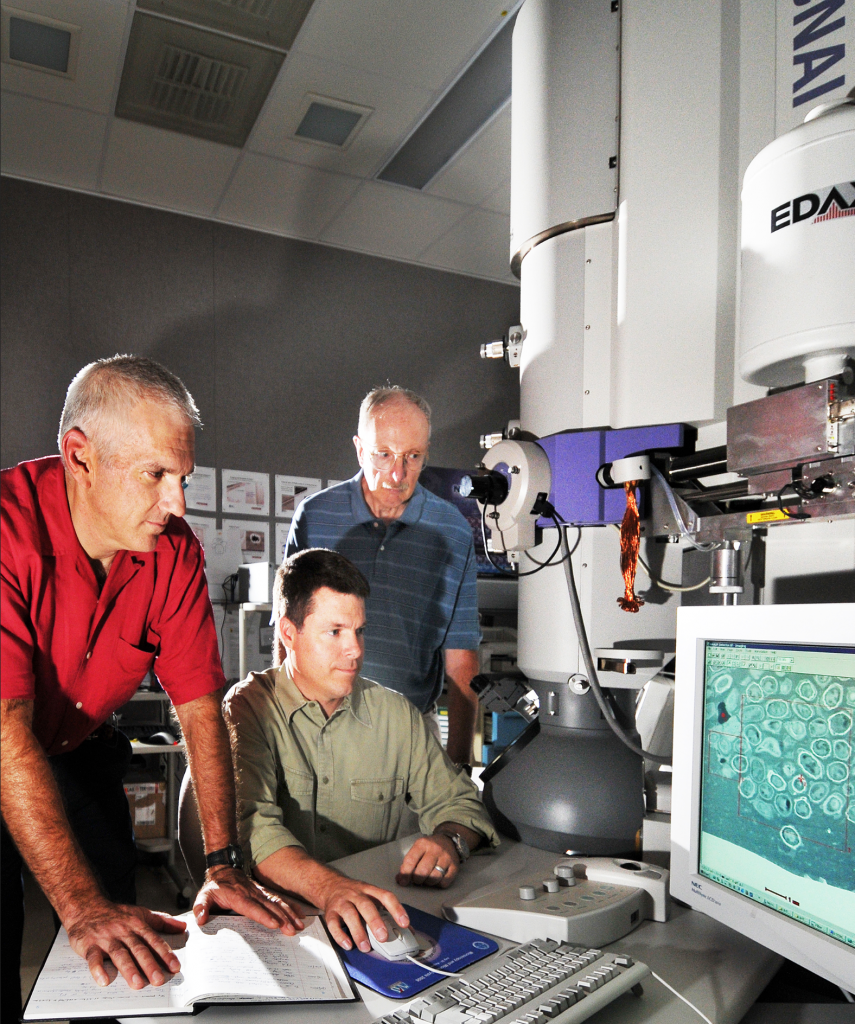
Microanalyzing anthrax for the FBI
Sandia researchers assisted the FBI in its investigation of anthrax-containing letters mailed in 2001 to several news media offices and two U.S. senators. Using advanced microanalysis tools developed for nuclear weapons work, they analyzed hundreds of samples and determined the anthrax in the letters was not prepared to disperse more readily through the use of additives — a crucial finding that helped guide the FBI’s successful investigation.
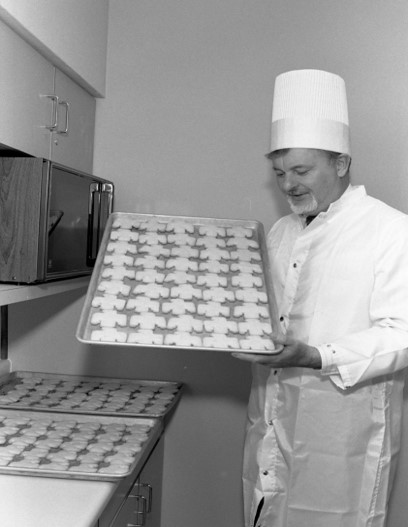
Home cooking yields a Labs director
Al Narath was Sandia’s first homegrown Labs director. He came in 1959 as one of the first wave of PhD hires to support the push to fundamental research. He rose through management and left in 1984 to join AT&T, to learn more about managing large institutions. He returned as Sandia Corp. president and Labs director in 1989, bringing an emphasis on strategic planning and quality control. To introduce his proposals to the workforce, he held a Vision for the ’90s day on Hardin Field April 25, 1990. More than 4,000 Sandians came out to hear the new strategy and munch Thunderbird cookies. Al may or may not have baked the cookies himself.
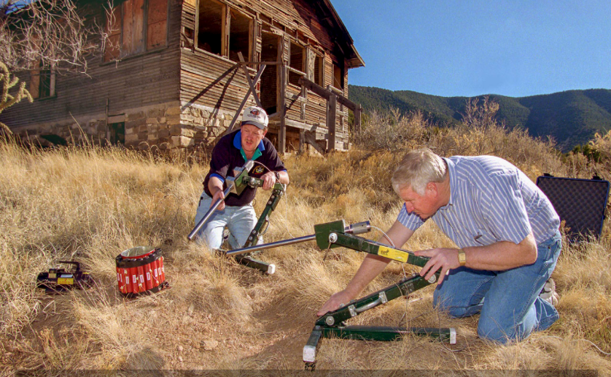
Disabling bombs in Montana & planes
The shoe bomb that Richard Reid tried to detonate on a trans-Atlantic flight and a device found in the Montana cabin of convicted Unabomber Theodore Kaczynski were disabled using an advanced bomb squad tool developed in the early 1990s at Sandia by Rod Owenby and Chris Cherry, the Percussion-Actuated Nonelectric (PAN) Disrupter. Manufactured by Ideal Products of Lexington, KY, it’s now used by bomb squads nationwide.
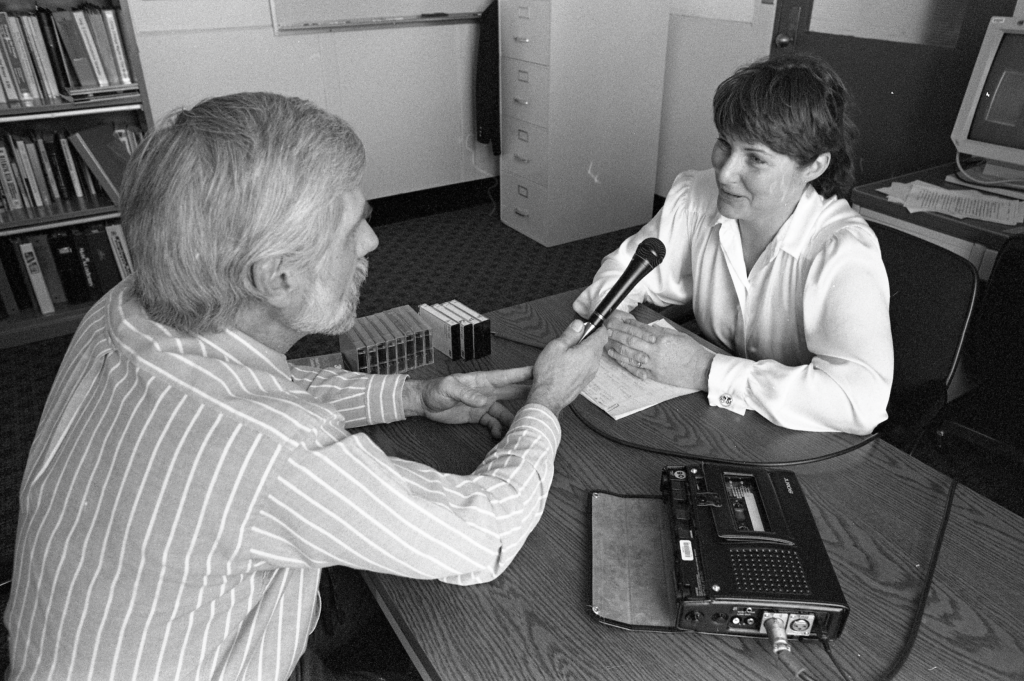
Calling Sandia and all the ships at sea
In March 1991, Radio Sandia went on the air, adding another layer of employee communications. The 10-watt AM station, operated by Bruce Hawkinson, aided preparations for the DOE Tiger Team investigations of ES&H performance and the ensuing responses to findings. The station moved to FM as KSNL, the only non-military radio station owned by a government agency. On Jan. 5, 1996, Radio Sandia went off the air and was replaced with the Sandia Daily News. A newer Radio Sandia at 1640 AM continually broadcasts prerecorded messages about weather, delays, closures and other potential impacts on Sandia personnel or operations.
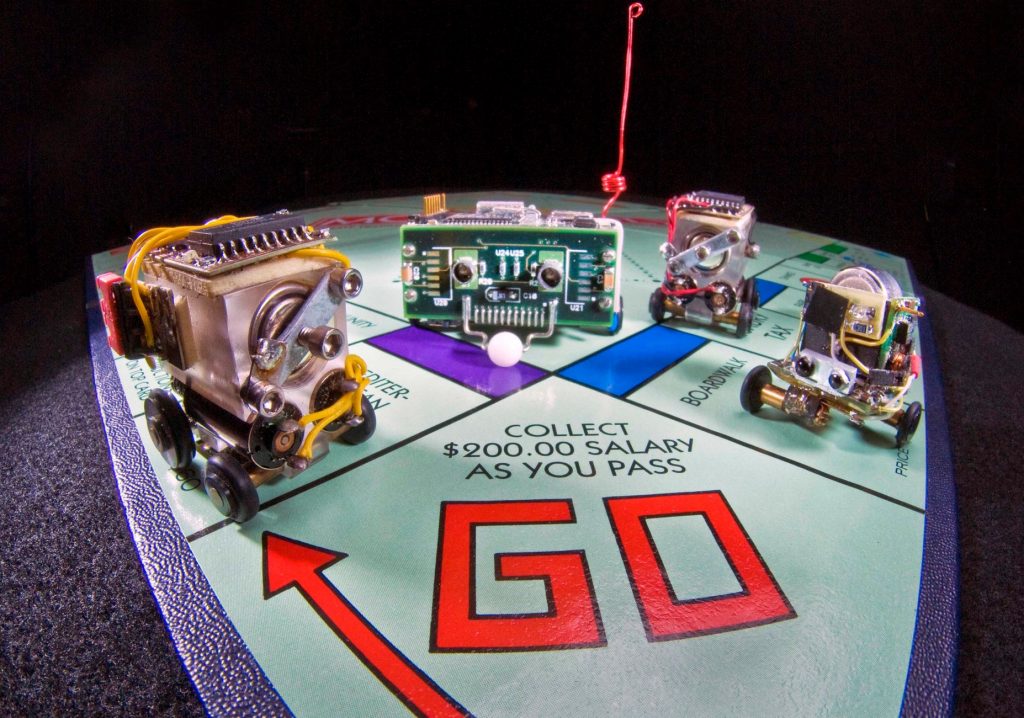
Tiny robots
The Smithsonian Institution houses nine of Sandia’s historically significant robots in its permanent collection at the National Museum of American History. They include miniature autonomous robotic vehicles developed in the mid-1990s that led to the creation of superminiature robots in 2001, selected by Time magazine as the invention of the year in robotics. Since then, Sandia has developed robots that can reach trapped miners, demilitarize submunitions and disable IEDs.
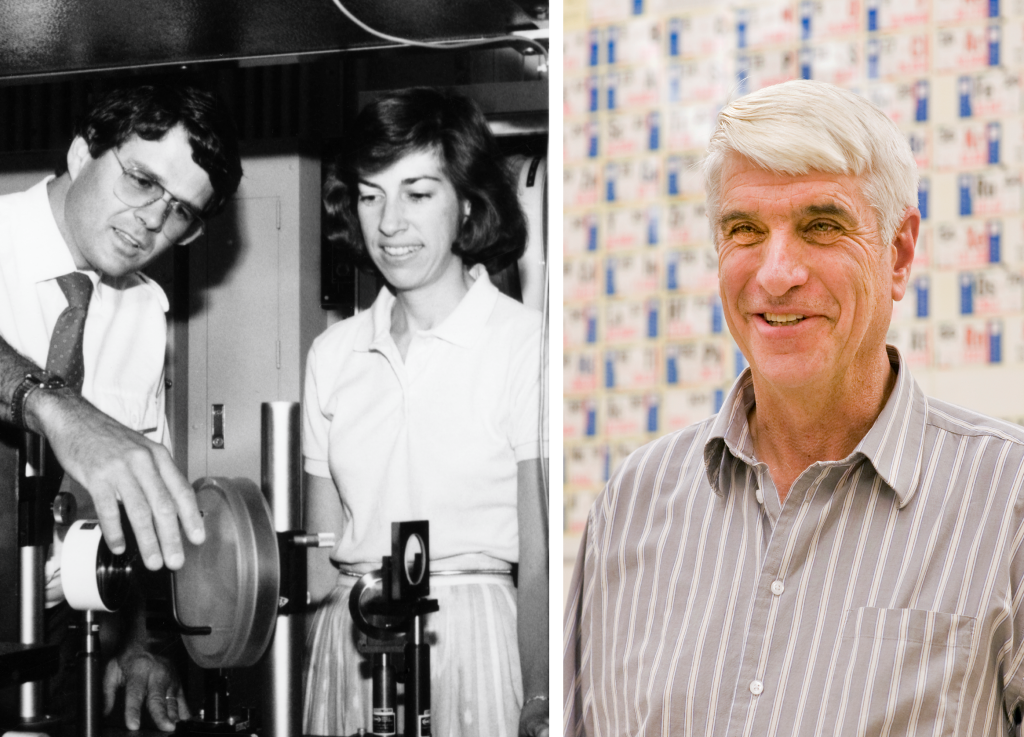
Two Sandians had careers as astronauts
Ellen Ochoa worked on optical methods for image processing at Sandia/CA before going to NASA, joining the astronaut training program and becoming a shuttle astronaut. She was the first Hispanic woman astronaut. Albuquerque native Sid Gutierrez was a U.S. Air Force fighter pilot who piloted the space shuttle Columbia in his first NASA mission in 1991. He later commanded space shuttle Endeavour. After 21 years with the Air Force and NASA, he joined Sandia in 1994 and retired in 2015 as director of Radiation Protection, Waste Management & ES&H.
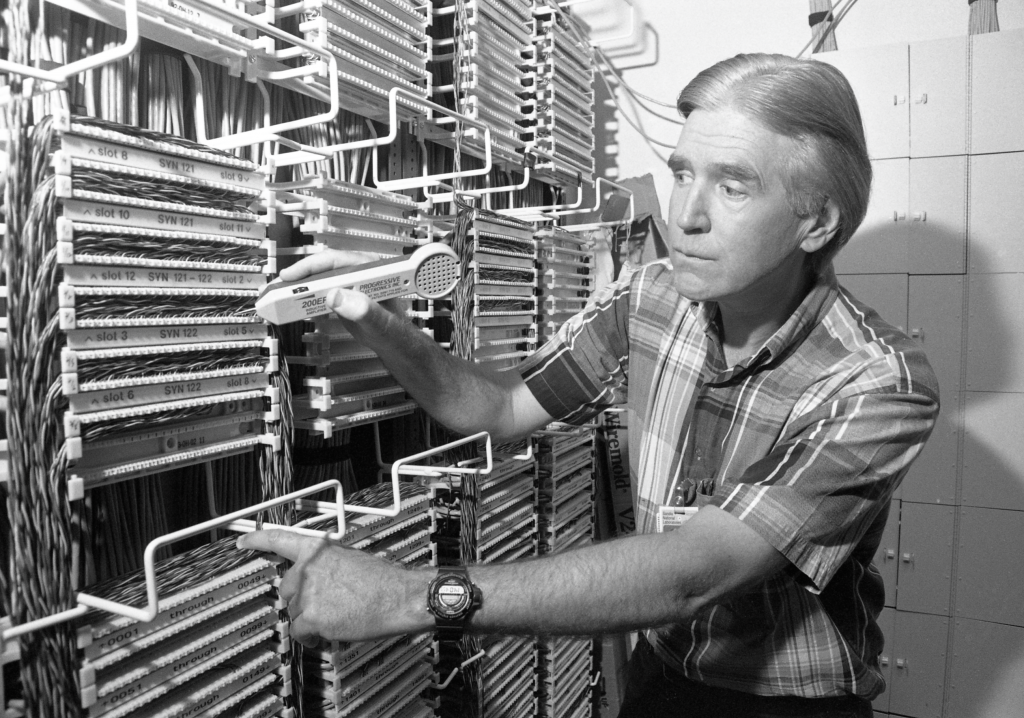
Only ½ of Sandians had web access in June 1995
In 1994, the Intra-building Recabling Project led by Roger Adams set out to get Sandia’s buildings wired. Fiber optic cable and new copper wire were installed and major buildings got Intermediate Distribution Rooms to serve as hubs of voice and data communications. The project brought communications services and high-speed data transmission to the Labs, allowing for desktop computing and the move to online information management, including access to email and the internet for all users by December 1995.
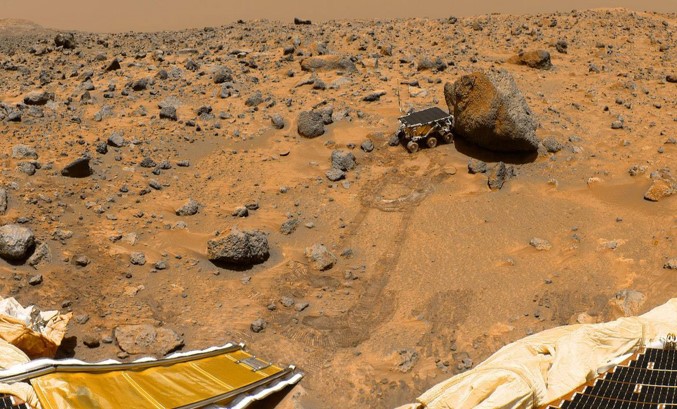
Airbags on Mars
When the Pathfinder spacecraft hit the surface of Mars on July 4, 1997, it bounced and rolled rather than crash landed, largely as a result of airbags designed by Sandia and NASA’s Jet Propulsion Laboratory. The airbags were based on parachute technology developed for nuclear weapons.
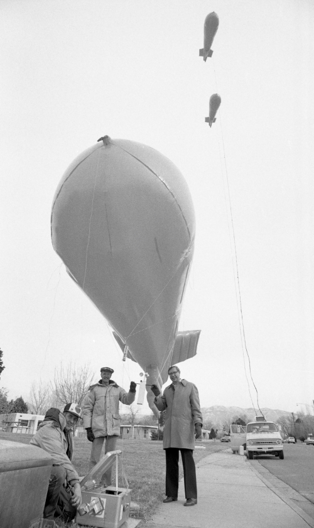
Helping Albuquerque study pollution
In 1983, the Applied Atmospheric Research Division, led by Bernie Zak, put up tethered balloons in Albuquerque’s northeast heights. The balloons carried air sampling and meteorological instruments and later were placed in various locations around the city to gather more than 500 samples that the city analyzed for pollutants, part of a study on the decline in winter visibility using Sandia technology. The Industrial Hygiene Division also took part in the study.
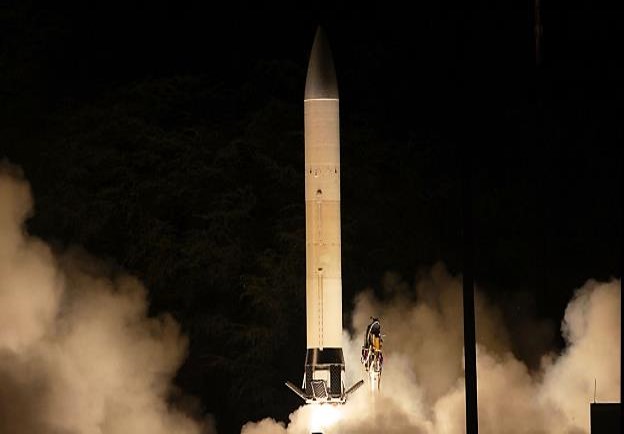
Hypersonics
In 2017, Sandia conducted its first successful flight test of the Common Hypersonic Glide Body, designed for the U.S. Army and Navy. The system was based, in part, on a maneuverable hypersonic vehicle the Labs flew in 1985, called the Sandia Winged Re-entry Vehicle Experiment (SWERVE). Sandia has developed and tested many navigation, guidance, control and thermal protection technologies for the nation’s hypersonic weapons and is exploring advanced autonomy and machine learning algorithms for trajectory planning and in-flight maneuverability.
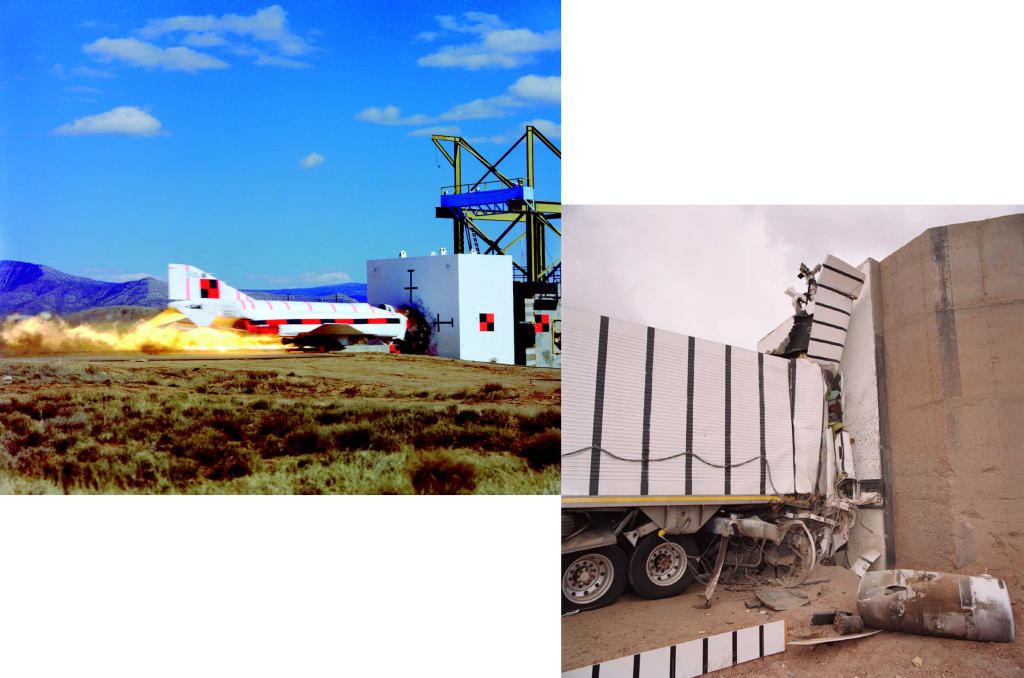
Crash and bash, Sandia style
In 1988, Labs researchers smashed a rocket-assisted F-4 Phantom jet into a concrete abutment to determine the impact force of a complete aircraft, including engines, into a massive, rigid reinforced concrete target. It established that the major impact force was from the engines. For decades, Sandia has performed impact tests on a wide variety of objects and vehicles, including the TRUPACT containers that safely carry transuranic waste to the Waste Isolation Pilot Plant.
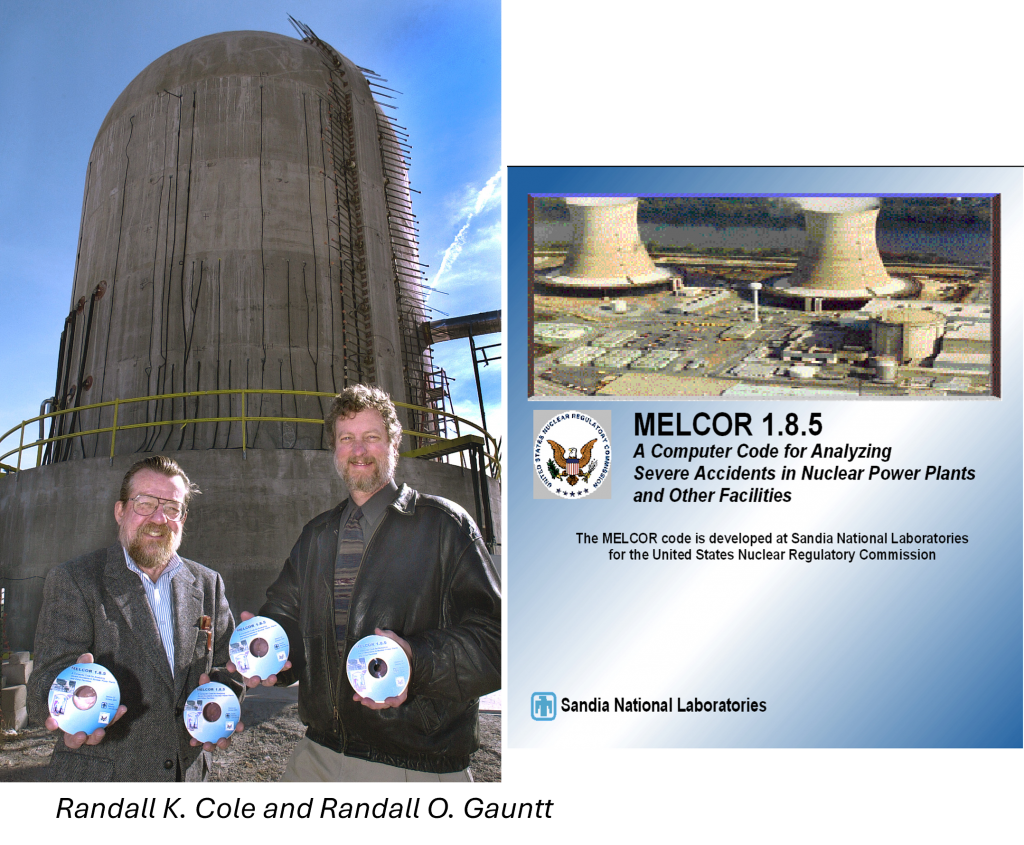
MELCOR reactor code
In 1989, Sandia first released MELCOR, a computer software for analyzing severe accidents in nuclear power plants. The software incorporates the results of nuclear power plant safety research since the 1979 Three Mile Island accident and is the de facto standard for evaluating plant safety among utilities and nuclear regulators in the U.S. and abroad. The software — updated numerous times since the initial release — is now applied to all reactor types, including traditional and advanced nuclear reactors.
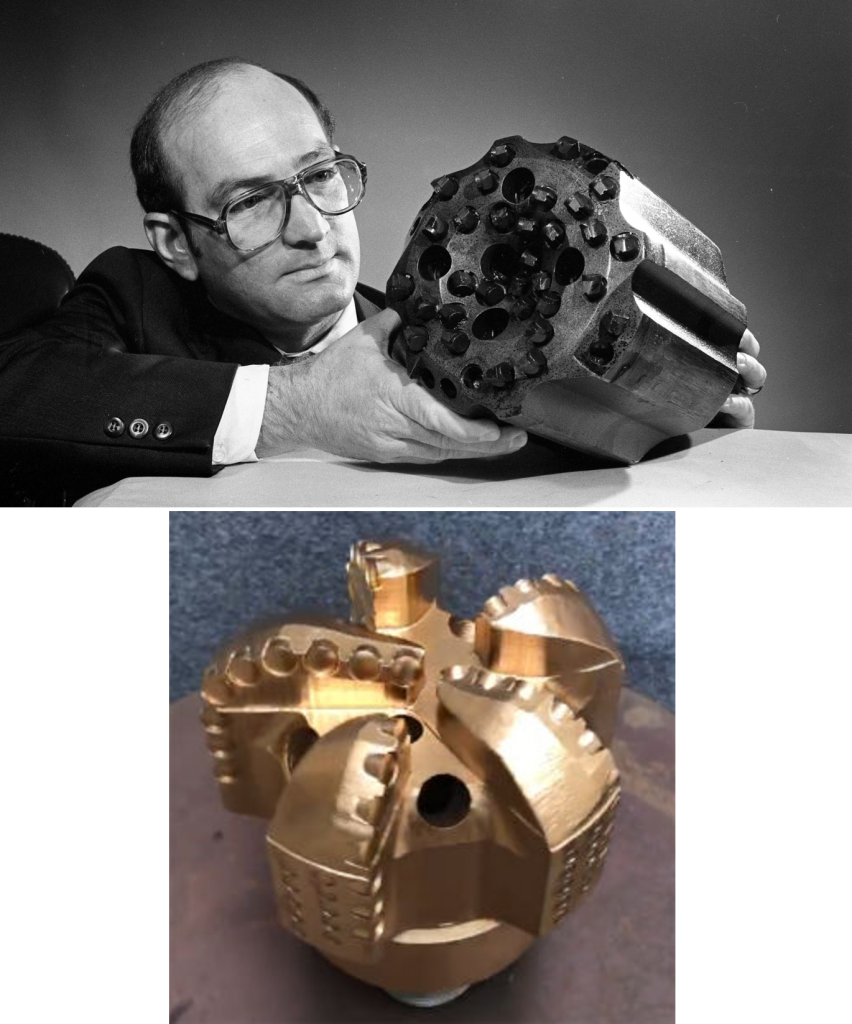
Drilling deeper
In the 1970s, a promising new rock drilling technology — the polycrystalline diamond compact drill bit — was introduced, but cutters broke or wore quickly in the field. Sandia research, modeling, industry collaboration and extensive field testing helped identify and fix design deficiencies, and now PDC bits account for about two-thirds of all oil and gas drilling, due to their efficiency and resistance to wear. Sandia also has tested PDC bits in more challenging hard rock fields to unleash geothermal energy.
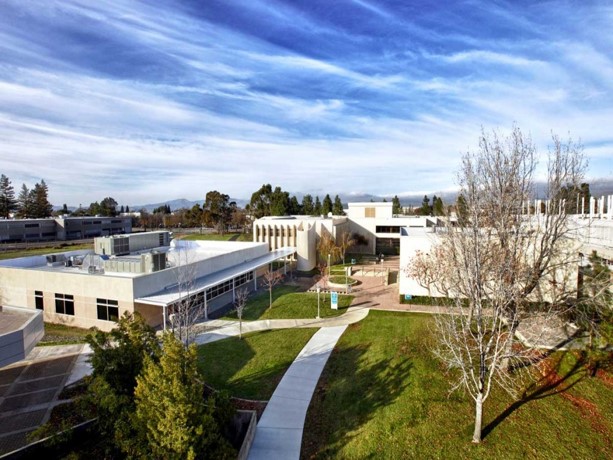
Learning how coal burns
When ground was broken on the Combustion Research Facility in 1978, initial plans included studies of coal combustion, work already under way in Don Hardesty’s Coal Combustion Division whose goal was to achieve cleaner, more efficient coal burning. When the CRF opened in 1980, it included a Coal Lab dedicated to finding out how coal particles burn. Researchers made multiple breakthroughs in the lab, including learning how to measure a particle’s temperature while burning using a laminar-flow reactor that directly observed the burning particles. The reactor was designed by Bill McLean and Reggie Mitchell, who was in charge of the Coal Lab through most of the 1980s.
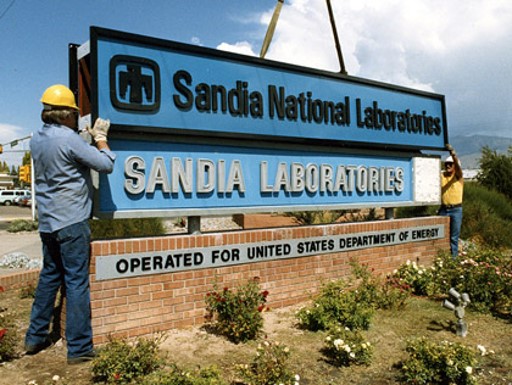
Sandia becomes a national lab, 30 years along
Although Sandia began life Nov. 1, 1949, it wasn’t until Dec. 29, 1979, that President Carter signed Public Law 96-164 [S. 673] — the “Department of Energy National Security and Military Applications of Nuclear Energy Authorization Act of 1980.” It states, in part, “The Sandia Laboratories at Albuquerque, New Mexico, and Livermore, California, shall after the date of the enactment of this Act be known and designated as the ‘Sandia National Laboratories’.”
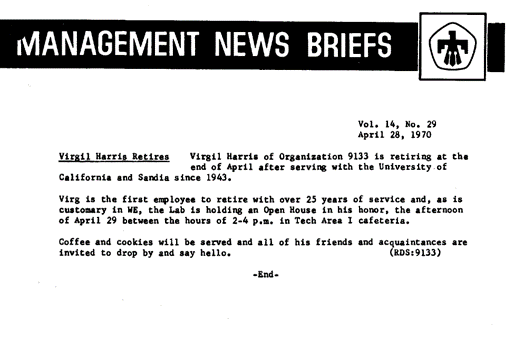
A career, and then some
Long careers are not unusual at Sandia, like Merrill Jones who retired in 2002 after 54 years and current employee Sharon Mackel, now in her 58th year. Early Sandians were credited for their service at Los Alamos. Virgil Harris started at Los Alamos in 1943, came to Z Division and then Sandia in Plant Engineering (now Facilities) before moving into Field Test, from which he retired in 1970. The first Sandian to retire with over 25 years of service, he celebrated with an open house, a tradition adopted from the Labs’ first management contractor, Western Electric.
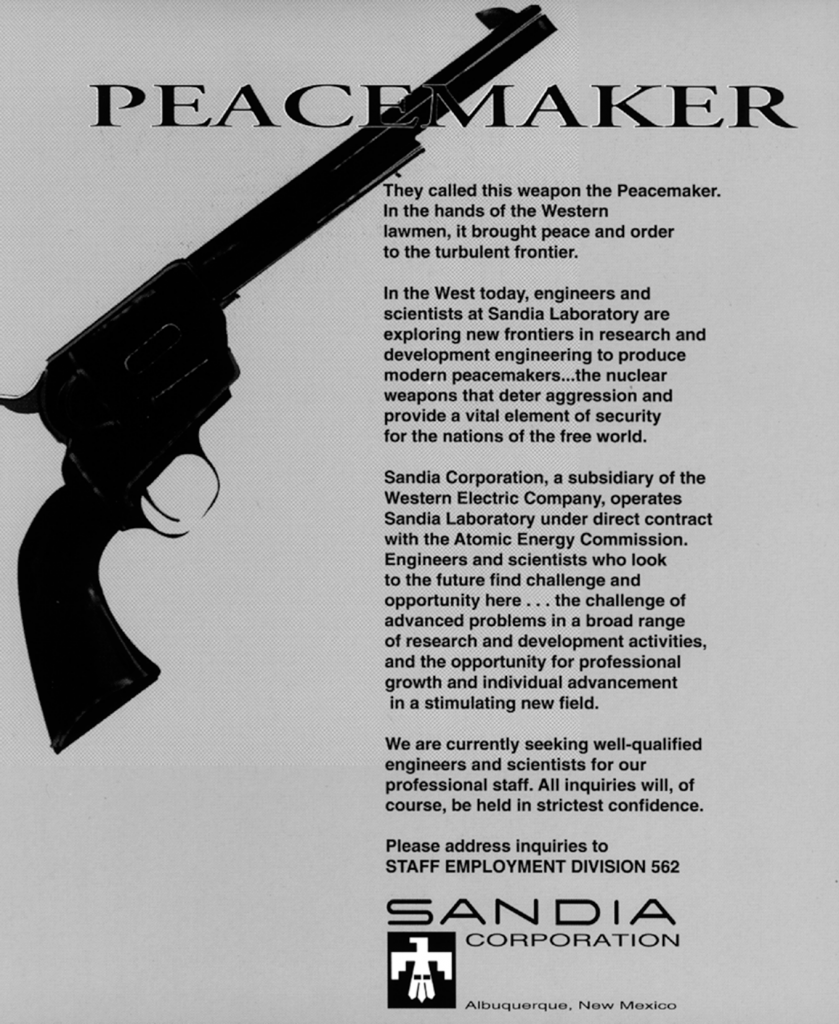
Recruiting the best minds
Sandia’s earliest recruiting ads emphasized its mission and the Labs’ locations in the west. As an employee, you would bring safety to the world through deterrence — “assist America in pursuit of peace.” You would also live in the great Southwest, with its beauty and recreational opportunities. As time went on, the mission and place remained central to the ads, but a growing emphasis on the opportunity to solve interesting problems with the Labs’ extensive scientific resources was added to the mix.

Securing the nuclear deterrent
In 1960, Sandia developed the permissive action link, a coded electromechanical security lock that prevents unauthorized use of a U.S. nuclear weapon. The technology helped reassure the public that the detonation of a stolen nuclear weapon was impossible.
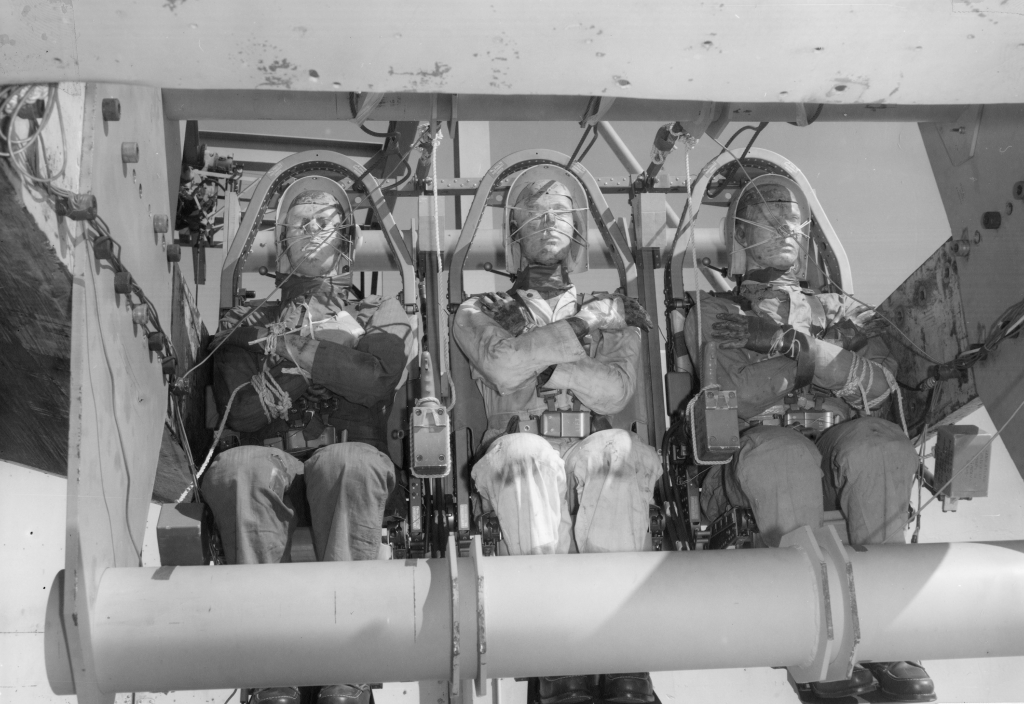
Astronaut seats, lunar instruments & more
Sandia supported NASA’ s Mercury, Gemini, and Apollo programs. Sandia’s clean room improvements in the 1960s led to planetary quarantine standards to keep Earth contaminants off other planets and other-worldly contaminants off Earth. Sandia also analyzed and tested radioisotopic heaters to warm seismic instruments left on the Moon by the Apollo 11 astronauts, tested astronaut seating designs, gave technical direction for the SNAP-27 isotopic generator, and provided input to NASA’s Aerospace Safety Advisory Panel.
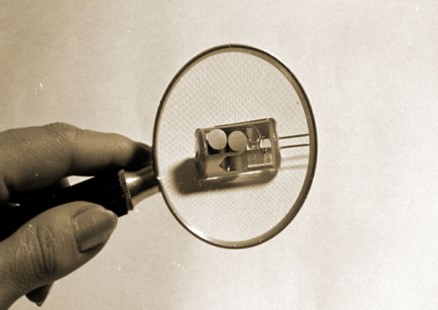
Rolamite for warheads and airbags
Invented in the 1960s by Sandian Don Wilkes, rolamite switches were used to trigger the deployment of automobile airbags until they were replaced in the mid-1990s by electronic sensors. Originally developed to detect a nuclear warhead’s acceleration pattern and deployed in a variety of stockpile weapons, the rolamite is a basic mechanical device consisting of free-moving rollers suspended within a tensioned band.
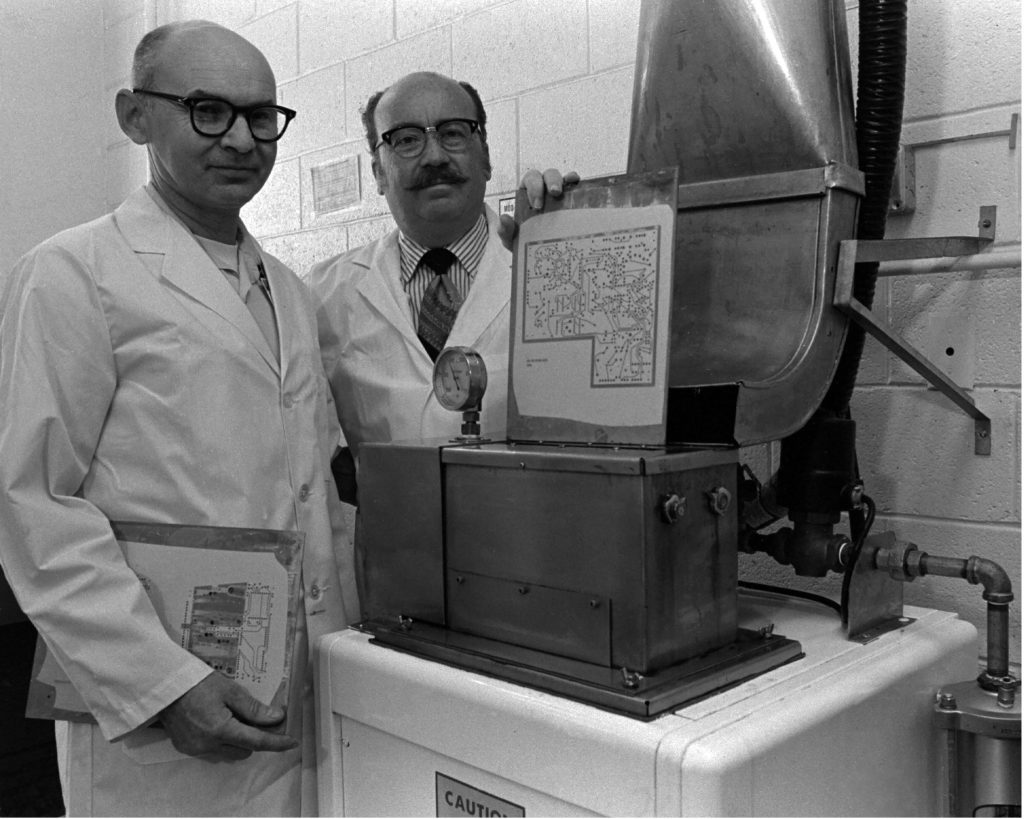
Hot-air soldering
While building circuit boards for the Vela satellite logic systems in the late 1960s, Travis “T. A.” Allen and Robert Sylvester invented a solder-leveling method that pushes flux across the board with hot air to ensure an even coating, and a machine to do it. Hot-air soldering was transferred to industry in 1974 and by the 1980s already was saving $250 million a year, more than $700 million in today’s dollars.
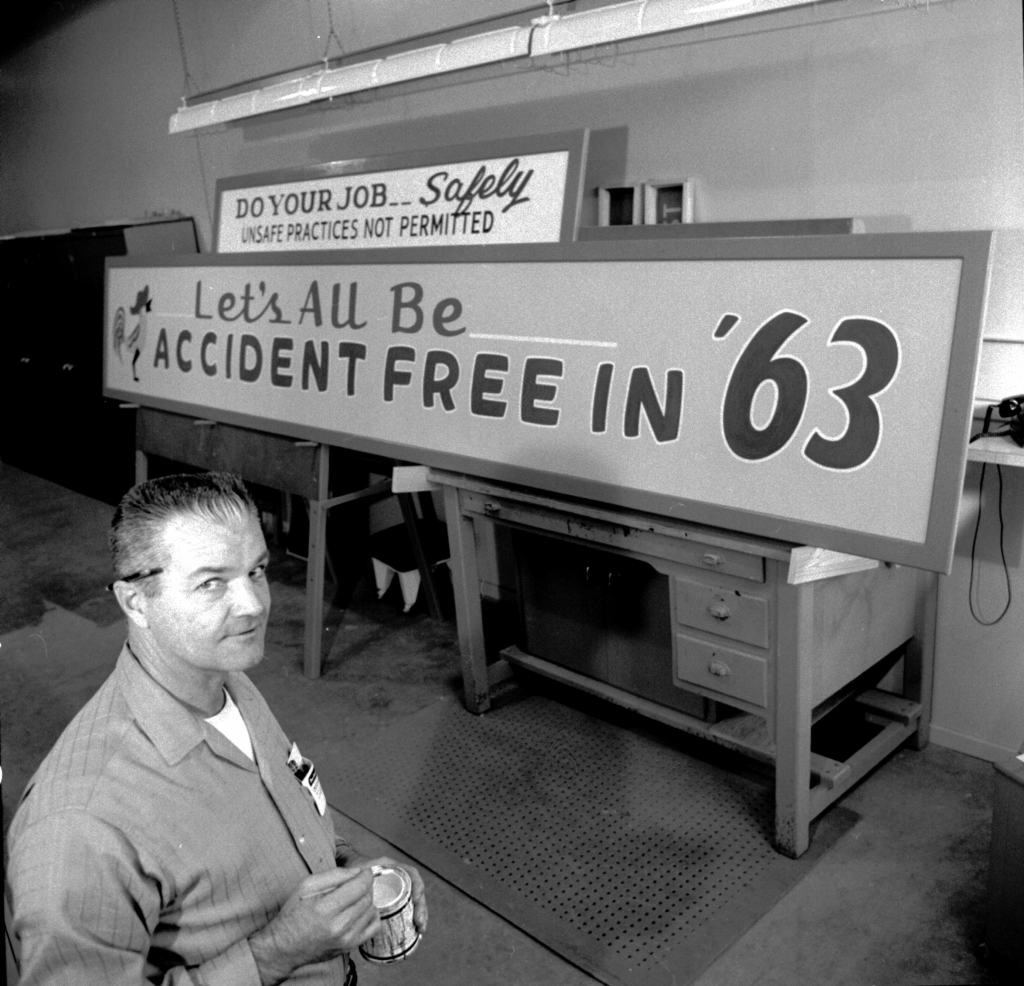
Safety all ways and always
Safety campaigns have changed over time, but they have been constant. Through the 1950s and 1960s, days worked without accident were reported widely, published in Lab News, and, early on, posted at the gates. Cartoon characters touted safety, as did signs and accident reports — how safety glasses prevent blinding; how safety shoes keep our feet walking — all variations on today’s reminders that we need to go home in the same condition in which we arrived.

Laminar airflow clean rooms from Sandia
Willis Whitfield drew up plans of his idea for an improved clean room design in 1960, introducing the idea of continually sweeping a clean room with air to remove any particles generated while work was underway. In 1964, the Atomic Energy Commission patented the design in Whitfield’s name. The laminar airflow clean room design transformed manufacturing, surgery, food packaging, and silicon chip manufacturing, which generates more than half a trillion dollars annually.

Testing under ground, through the decades
Sandians have been key to U.S. underground nuclear testing since the first: the 1.2 kiloton Uncle crater shot of Operation Jangle at the Nevada Test Site on Nov. 29, 1951. Testing after that continued as a mix of underground and atmospheric shots until the 1963 Limited Test Ban Treaty banned all testing in space, the atmosphere and underwater. Underground testing continued until the last one on Sept. 23, 1992, Divider, at the Nevada Test Site. Since then, science-based stockpile stewardship has replaced nuclear testing.
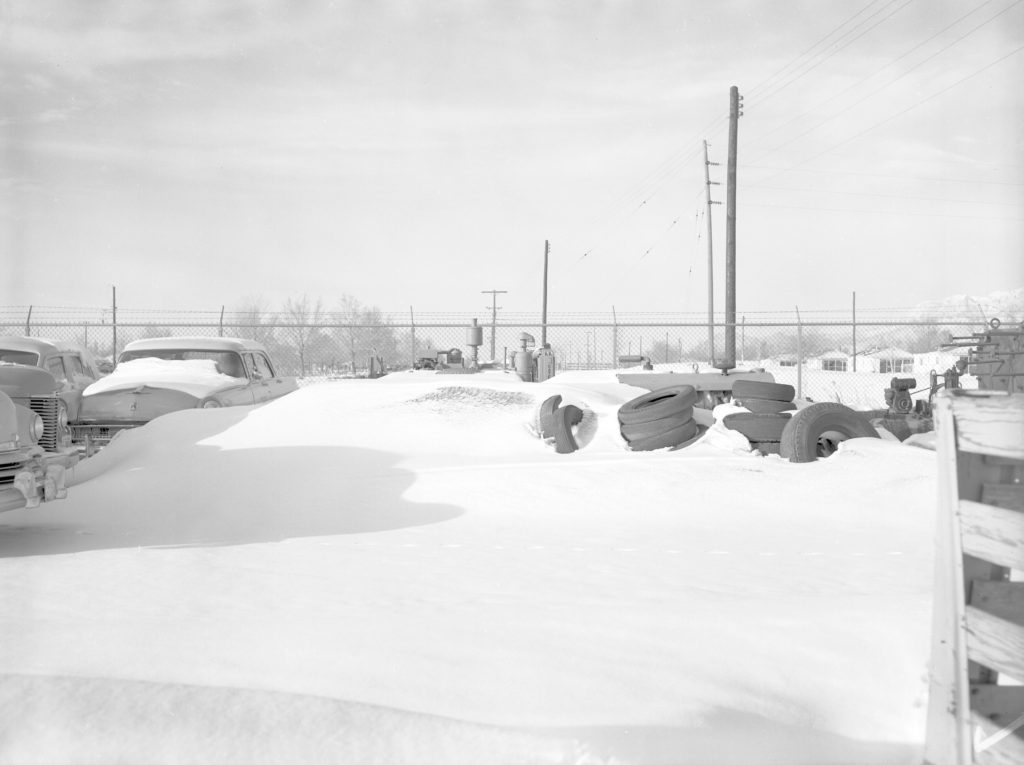
The great storm
Wednesday, February 1, 1956, dawned cold with a trace of snow in Albuquerque. By noon, the wind and snow had picked up and by 3 p.m. road conditions were so bad that those anxious about getting home were excused to leave. By 4 p.m., hundreds of cars were stuck — in snow, in traffic and in blocked lots that Plant Services and the Motor Pool were trying to clear. Some employees spent the night in their offices, quickly emptying the candy and cigarette machines. Hundreds of others spent hours getting home — 8 hours to the northeast heights (which was a lot closer then).

Check for fallout, the easy way
In 1957, Maynard Cowan of the Labs’ Full Scale Effects Division developed a circular slide rule to calculate fallout patterns, including extent and intensity. The calculator consisted of eight scales mounted in four movable concentric circles. Users had only to input wind conditions and the yield of the blast, which they could estimate from the height of the mushroom cloud. Cowan developed the calculator for use by defense and civilian authorities, as well as the public, in case of nuclear attack. His design was adapted and commercialized by others.
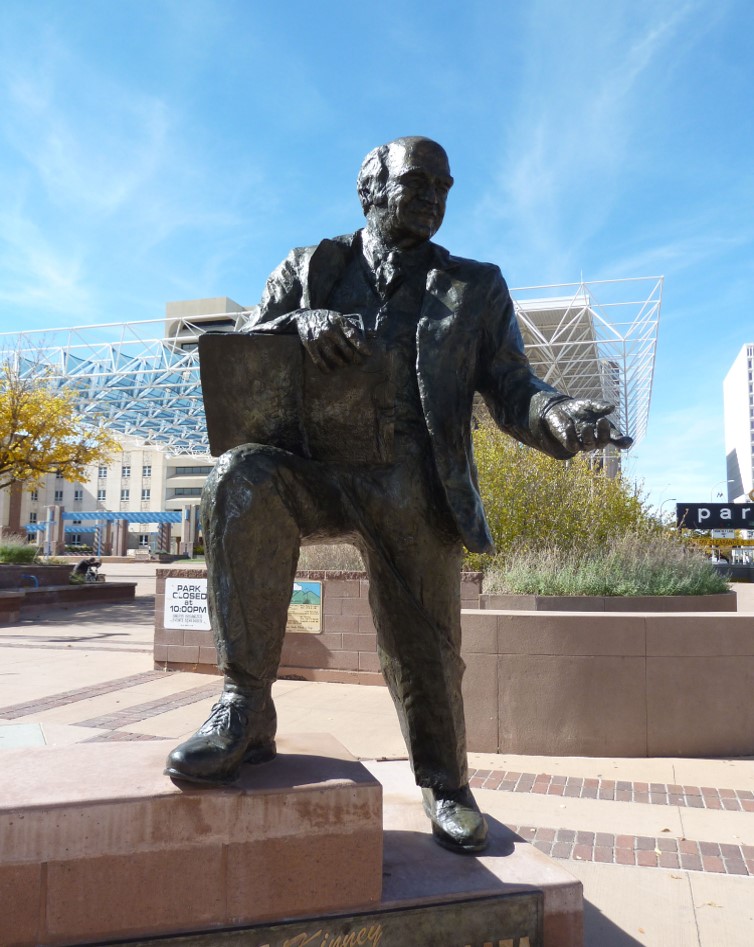
Yes, your honor, I’m a Sandian too
Harry Kinney took his bachelor’s in Mechanical Engineering from UNM to Sandia in 1956 to work in the handling equipment department, then in weapon compatibility and advanced systems development. His abiding interest in politics led him to serve on the Bernalillo County Commission, 1956-1962, and the Albuquerque City Commission, 1966-1973, and as chairman the last three years. He left Sandia in 1973 to work for U.S. Sen. Pete Domenici, then ran for mayor and served two terms: 1974-1977 and 1981-1985. As mayor, he is credited with starting the Albuquerque International Balloon Fiesta and establishing the Elena Gallegos Land Grant as open space. The Civic Plaza is named for him. After he left office, he was a substitute teacher and drove a taxi in town. He died in 2006.
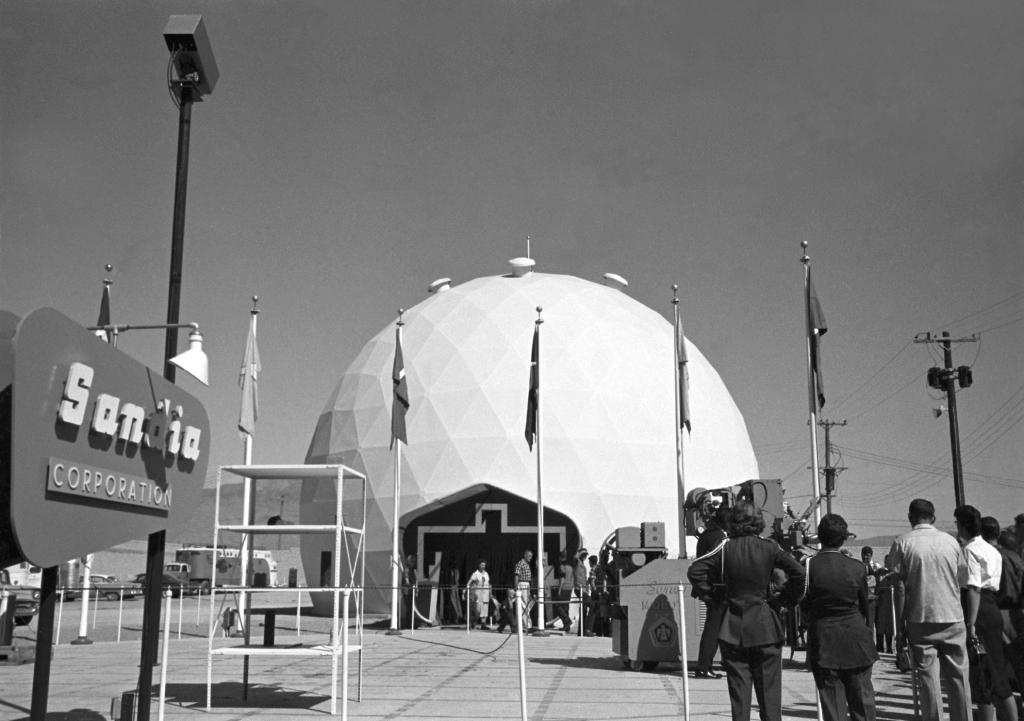
The sphere of science
Sandia borrowed a geodesic dome from Lincoln Laboratory in 1958, for displays at the N.M. State Fair. It was so popular that the exhibit stayed open an extra week after the Fair ended. The next year, Sandia obtained a geodesic dome of its own, dubbed it the Sphere of Science and installed it just outside Tech Area I. It moved to the State Fair in the Fall, where 110,586 visitors trooped through before it moved back as a visitor center, displaying the Labs’ technical work for 20 more years.

Happy Birthday, Sandia CA
68 years ago this month, Sandia California was established and many Sandians moved west to provide engineering support for the nuclear weapons designs coming out of the University of California Radiation Lab, now known as Lawrence Livermore National Laboratory. The new Lab was sited on land used as Naval Air Station Livermore during World War II, just as its NM parent was sited on the former Albuquerque Army Air Field.
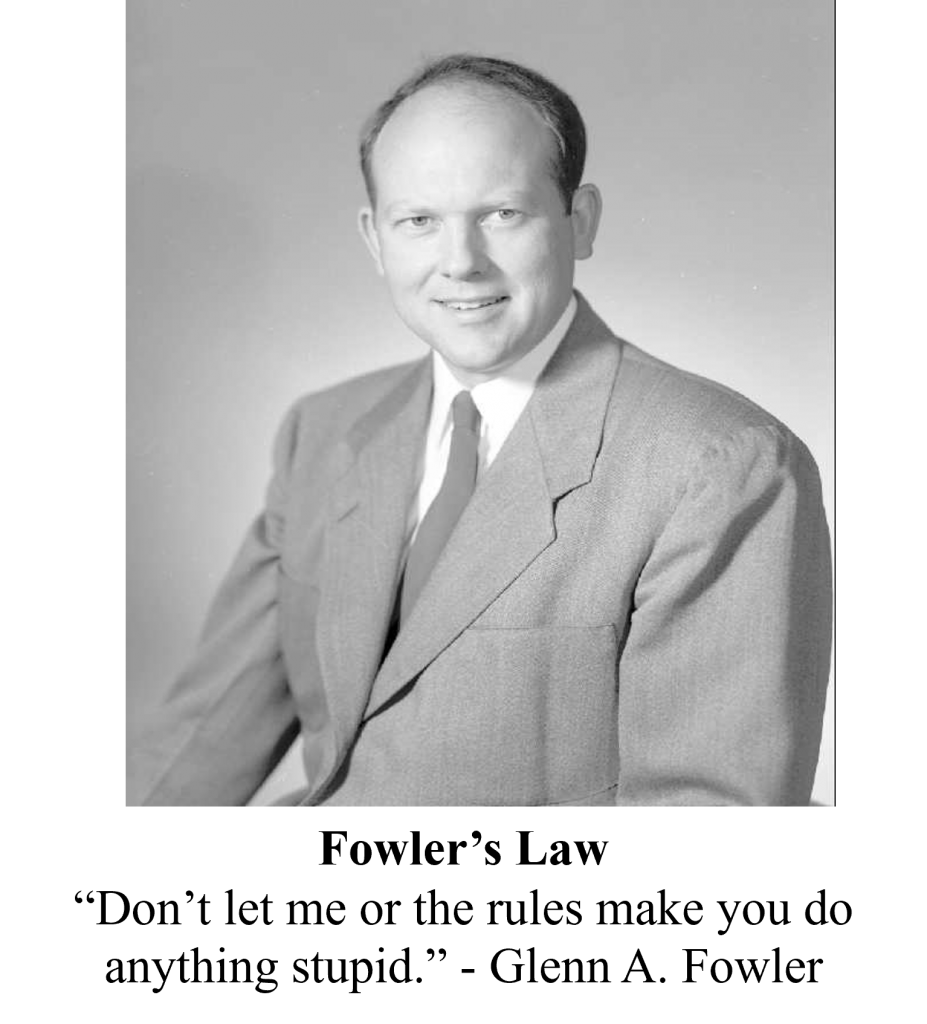
Glenn Fowler, father of field testing
Glenn Fowler became the first head of Test Operations in 1945, when Sandia was still Z Division. He established the independent, capable culture of field testing for which the Labs is still renowned and helped select Tonopah Test Range as the primary weapon test facility. Universally respected for his leadership and communication skills, he helped bring a culture of basic scientific research to Sandia and promoted advanced education for the technical staff. He helped guide diversification into satellites, space nuclear power, sensors, advanced telemetry, and, eventually, nuclear security systems and energy programs.
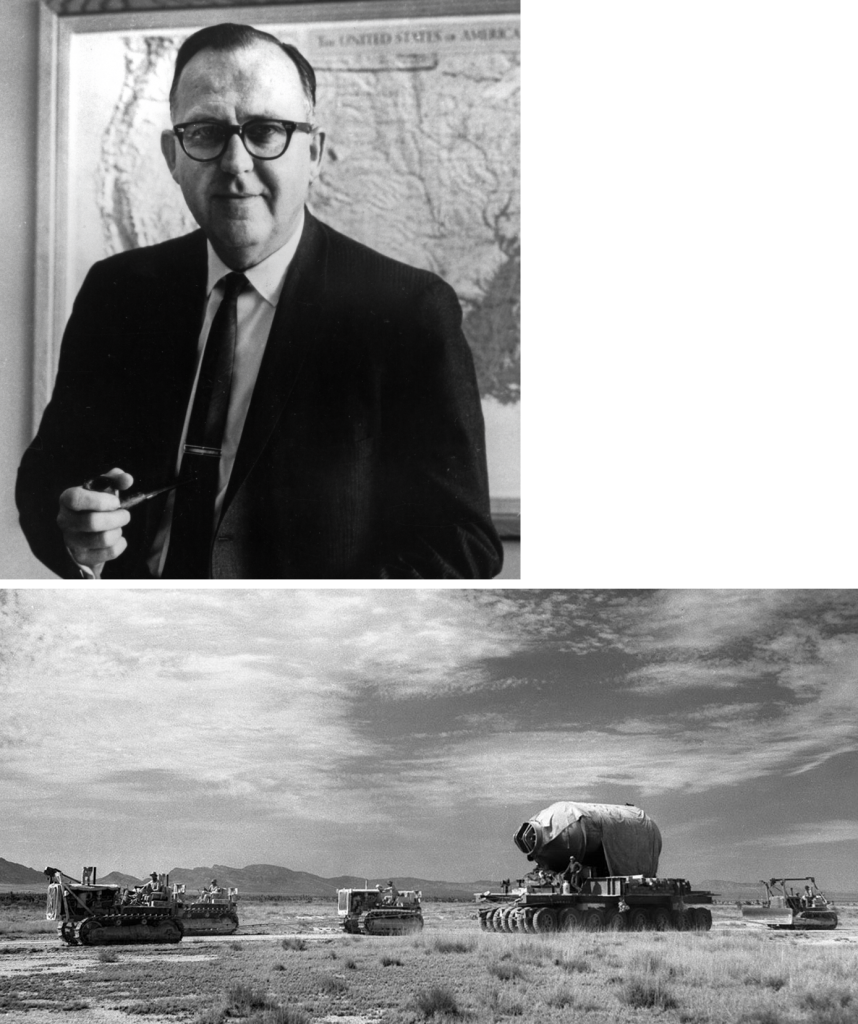
Oscar winning Sandia pioneer
Former Sandia executive vice president Bob Henderson, who headed weapons engineering until 1974, also was an Academy Award-winning engineer, recognized for developing photographic processes and special effects. He was recruited to join the Manhattan Project, working at the University of California, Berkeley; Oak Ridge; and Los Alamos, where he developed the “Jumbo” container intended to contain the Trinity test, but never used. Although he had planned to return to Hollywood after the war, LANL Director Norris Bradbury persuaded him to join Sandia in 1947.

All the news that fits Sandia
The now online Sandia Lab News began in 1948 as the mimeographed Sandia Bulletin, which appeared sporadically and later weekly. It focused on internal news—often poking fun at individual employees, their hobbies and habits. In 1950, it moved to print, and in January 1954 became the biweekly Sandia Lab News. Gradually, social aspects of coverage thinned and more stories about technical achievements appeared as Lab News reached a broader, external audience. The December 4, 2020, issue was the last on ink-stained paper.

The art of science
Sandia started a technical arts group in 1948 with about two dozen trained artists, many of whom were award-winning professionals. They created technical illustrations, drawings for manuals and interpretations of weapons and other technology, as well as graphics for communications about day-to-day operations. By the 1980s, keyboards, monitors and software began to supplant pens, ink and paper.